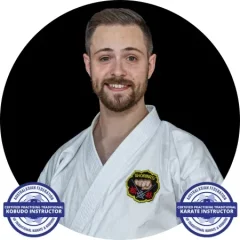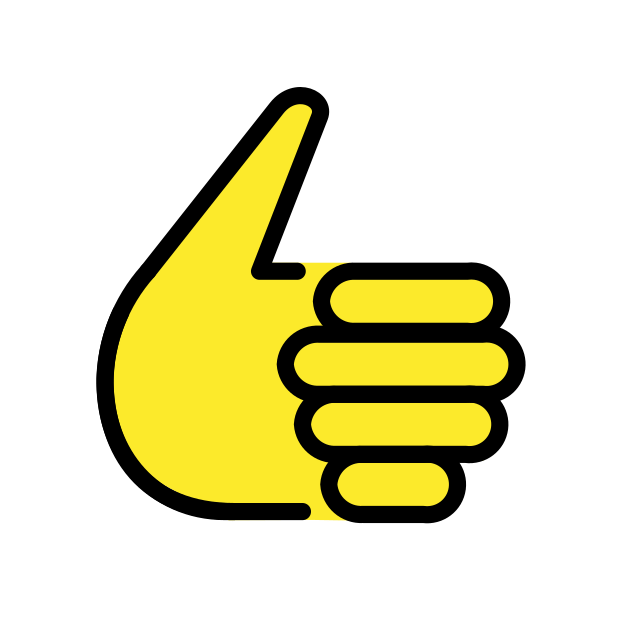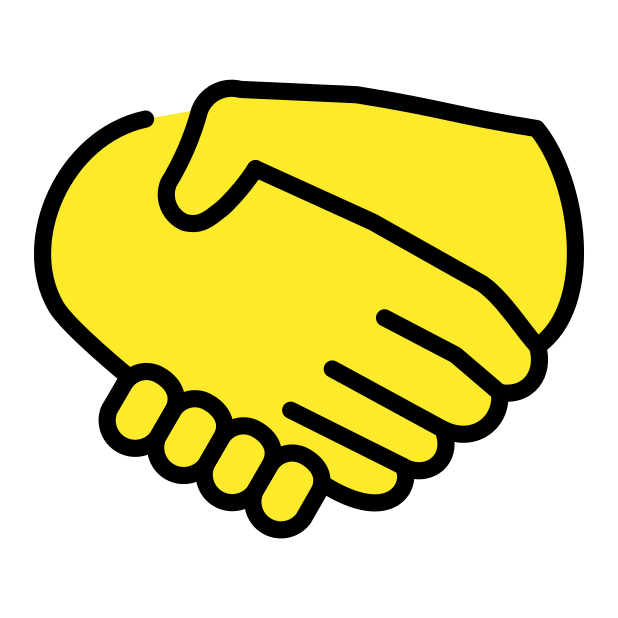
Nidan Melbourne
KarateForums.com Sempais-
Posts
2,605 -
Joined
-
Last visited
About Nidan Melbourne

Personal Information
-
Martial Art(s)
Goju-Ryu, BJJ, Balintawak Arnis
-
Location
Melbourne, Australia
-
Occupation
Student
Recent Profile Visitors
3,076 profile views
Nidan Melbourne's Achievements

Black Belt (10/10)
-
It is true, that is a thankless job. You need to have bit of a thick skin to do it, but I found that it was great for me to develop it and also to work on how to communicate effectively. People lose their minds on the 50/50 calls or the ones that are difficult to make without video footage that we could technically use. What irked me the most, is the comments by coaches/players/spectators of "how did you miss that Ref?". Now I have one of two responses: 1. "I didn't see it because I wasn't in your position to see it" 2. "I did see it, but didn't have much of an impact on the game let alone on the play" - If we called absolutely everything that was a foul, then there would be no players! - If it impacts a shooter = foul gotta be called I taught my guys and girls that if they let abuse fly at the start of the match, its going to be hard to stop later on during the match. Give 1 warning, after that Tech them or DQ them.. IF it is an issue with a spectator I would throw them out as a Supervisor. The things that make me laugh the most are some violations; where players nearly always go "I didn't do that!"
-
So in a past life; I was a Basketball Referee and a Referee Supervisor for a Local Basketball Club for several years. Once I got my Accreditation, I received the nickname "Chop Chop" which many of my referee friends still call me to this day. Some called me "Baba Yaga" because they were terrified if I ever got summoned to their court whilst they were playing. Now during my time as a Referee; I had to use one massive tool that we tend to learn as a Martial Artist multiple times. And it was how to Communicate with people when they were angry/aggressive. Now how did I get the "Baba Yaga" nickname? I got it at a Tournament in 2009, where there was an incident where I dealt with this particular team 3 times over the course of the Tournament. In the 2nd Match, this particular coach came onto the court in a rather angry mood and gave him a "Technical Foul". Advised him one more that he would be out of the stadium and that I would place him on report (and attend a tribunal hearing). He decided to make the wrong move opted to take a swing at me, I caught it and did an epic throw on him and he landed on the flat of his back. Told him that he was now on report for several worse charges, so I attended that tribunal and he was given a life ban. I was still allocated to their 3rd match, which was after the tribunal. They saw my face and tried to get me reallocated to another court, but the stadium declined as all the other courts were already hosting the VC Matches (VC = Victorian Championships = the higher tier matches over what I was doing). So I got dubbed that "Baba Yaga" Nickname, because I was the cause of their nightmares and a lot of in fighting for the team. It eventually got back to my association, and it just stuck when it came to difficult coaches who messed with my referees. NOW is it worth for Referees to know how to defend themselves? Yes!
-
Now I've attended Seminars myself and been a Seminar Instructor myself. I am open to learning new things; so when I look to bring in Instructors to run Seminars. I take into account how it can be a benefit to my students and how it can expand their knowledge or skills. If I was to invite a Goju Instructor; I generally find instructors that are far more senior than myself and have a wealth of knowledge that I can only hope to learn. With the biggest name being Tino Ceberano Hanshi. But the type of instructor and their personality is a massive thing for me; as they need to have a passion for what they do. The first person I think of is Jesse Enkamp Sensei, when I was at his seminar here in Melbourne Australia you could just see how much he loved what he does. And that he takes the time to explain things in a way that you can understand and adapt to it quickly. When I am asked to run a Seminar; and people ask me about my experience and credentials I say: - Started in 2001, Black Belt Awarded in 2008 - Started Teaching in 2006 - Tournament Coach from 2018 - Bachelor of Exercise Science (Clinical Practice) Simply put; when I teach, I make things relevant to both general exercises in the Gym and in the Dojo. Take Shikodachi for example; the closest exercise you'll find is a Sumo Squat as both a mobility exercise and for weight lifting.
-
Color Belt Curriculum Breakdown
Nidan Melbourne replied to BrandonH45's topic in Instructors and School Owners
We run a system for all our Kyu Grades as follows; 5 'Tags' per Belt are required to be eligible for Grading. To be eligible to test for a 'Tag' you must complete 5 lessons then on the 6th you can test; however if at your previous grading you were weak in a particular area you would test on the 12th instead of the 6th. Each 'Tag' is denoted by a Black Piece of Electrical Tape at the end of the belt. Our Dan Grades if they wish to Denote Rank on their belt, they need to get it embroidered or if ordering a new belt they get it added then. So 5 Tags with 6 Lessons between = 30 Lessons minimum prior to being eligible for promotion. Also it assists us knowing where everyone is at in relation to testing and what their considered competent in. 9th Kyu (White Belt) 1. Kicks - 6 Total; Front, Groin, Roundhouse (Body), Roundhouse (Head), Knee Joint, Side 2. Basics - Blocks, Strikes (Punches, Palm Strikes, Elbows, Snap Strikes) 3. Combinations 4. Kata 5. Pre-Arranged Sparring 8th Kyu - 3rd Kyu 1. Basics 2. Combinations 3. Kata 4. Pre-Arranged Sparring - Bunkai included for Adults Curriculum (4th Kyu +) 5. Sparring 2nd Kyu + 1st Kyu 1. Basics - Throws and Takedowns (Demonstrate 2) have been recently added - Demonstrate SAFE Falls (Front/Back/Side): ALL From a standing start 2. Combinations 3. Kata 4. Pre-Arranged Sparring - Bunkai included for Adults Curriculum (4th Kyu +) - Kyogi (Self-Defence Routines) 5. Sparring -
To the Bolded; not many do. Unlike NFL Players; Rugby Players don't wear protective equipment (apart from Mouthguards and some players wearing the thinner helmets*) and we also have a huge rate of Cauliflower Ears. For those NFL Players, I do get concerned for their longevity as for what I've seen there is still "Match-Level" Contact occurring during their Training Sessions. And from what I've heard and seen it occurs at nearly level of the sport (including Grass-Roots). When I was a Rugby (Union) Player for School, our Trainings we had minimal contact to the head. So our Forwards (Numbers 1-8) when we did our Scrum Training, either focused on correct binding techniques or using the Scrum Machine. Even when we did 1 on 1 Partner Drills for it, the risks were a lot lower. But when we were practicing our set manouevres, and there were "rucks" there often weren't opposing players to cause impact. But on Match Day, the Officials and First Aiders were so strict on head contact and any player who potentially has a Concussion. Medically Cleared or Not; they are required to sit out 2 Matches and Trainings.
-
Enjoy your Public Holiday
-
Now with that "Slapping" Thread being of interest, I thought it might be good for some awareness around this disease and thought it might be a good thing to talk about. As we are in some way at an increased risk of this. I am not saying that everyone in the MA Community will develop this, along with other activities (i.e. NFL for you Americans, and Aussie Rules Football for me here in Australia). As we have many amazing members here who have been in the world for several decades. As I have recently updated my will; I have included that only my Brain to be used for research. Because I have a family history of Dementia. Chronic Truamatic Encephalopathy or CTE for short; which is a Progressive Neurodegenerative Disease. Which can have the following symptoms: Memory Loss Confusion Mood Changes (Anxiety, Depression, Aggression included) Impaired Judgement Impulsivity Behavioural Changes Now these can be confused with Dementia or Alzheimers whilst one is alive, but can be ruled out using the symptoms and family history along with other conditions. Unfortunately it is a common issue in Contact and Combat Sports; as the risk of repeated head trauma and concussions is quite high. In comparison between the UFC (and other MMA type formats) and us "normal" folk there is a stark contrast between the two.
-
Going to add, as by chance I ran into a few classmates from my university days (who went onto doing their Masters) and asked them about it. They did express concern surrounding risk of damage in the long run. Especially where some videos demonstrated a "change" in the persons appearance after a slap occurring. Outside of Brain Damage (Structural, Nerves, Circulatory etc), I wonder about: Damage to Entire Skull Damage to Facial Nerves Flow of Cerebrospinal Fluid to Spine (and vice-versa) Damage to Spine (likelihood of complete paralysis) Brain Scans and on the slightly morbid side what the damage looks like on a Brain Autopsy? Like what has been occurring on the small percentage of NFL Athletes who have passed away and have donated their bodies to research.
-
I do find it fascinating to watch BUT that much force is concussive. Doesn't matter if the person blacks out or not, as it is similar to a car crash many ways. Unfortunately for a lot of activities like this, may not present itself for a long time. In the science world we don't know the true impact between Brain Trauma and Contact Sports, as research only really happens after ones death (even then fewer donated to research). Even in the MA community, we can't be 100% sure of ones behaviour is because of either trauma or ones actual self. So forgetfulnes for example it is hard to say what is occurring.
-
My club doesn't do Naihanchi as part of Curriculum requirements, but has it as an optional tool for Black Belts. But having come through Goju-Kai (Yamaguchi Gogen Sensei - then through Tino Ceberano Hanshi) Sanchin for us a very powerful kata, performed solely in Sanchin Dachi. Naihanchi for us utilises Heiko Dachi + Shikodachi still a strong grounded kata but with fluidity.
-
Extensive Testing
Nidan Melbourne replied to Nidan Melbourne's topic in Share Your Testing, Grading, or Promotion
It was a long grading indeed. Mentally tired for sure, took me a few days to go through all the information for each candidate so they got individual packages of information. On top of the 2.5 days; it took all up 14 hours of work to give them comprehensive information alongside giving the clubs a massive portfolio of data. -
Behind the Scenes
Nidan Melbourne replied to Nidan Melbourne's topic in Instructors and School Owners
Thats something I have noticed in a lot of clubs; where they don't teach the grappling side of things. My club teaches it but not as part of the curriculum. Even though I've stepped away from the dojo for the time being, I have noticed so much more in terms of kata especially in the terms of grappling and throws/takedowns. Even the lowly introductory kata like the Taikyoku Series, I have found so many golden nuggets of things in them. -
Behind the Scenes
Nidan Melbourne replied to Nidan Melbourne's topic in Instructors and School Owners
Is it not a term that is used in the US? like what makes the Shindokan the Shindokan. Just like what makes Goju Goju. -
Behind the Scenes
Nidan Melbourne replied to Nidan Melbourne's topic in Instructors and School Owners
I'd love to sit down one day with you to hear stories about your Soke + Dai-Soke. Everything you have said about them makes me think that they were wonderful people. Also I'd love to see what makes the Shindokan tick -
Behind the Scenes
Nidan Melbourne replied to Nidan Melbourne's topic in Instructors and School Owners
Here was one of my Teaching/Reffing Days from 2014 (totally happy that I don't mix the two anymore) 07:15 - 07:45 Travel to Dojo 07:45 - 8:00 Safety Inspection 8:00 - 10:00 Karate (Balwyn Dojo) Had to be a tad selfish and leave straight away due to reffing commitments 10:30 - 11:00 Get to Office (Kew) Find Stadium Bag, Count Float (Referee Payments) Pre-Fill Referee Cover Sheet (Names) Check Referee Roster Make calls to fill in gaps (where possible) 11:00 - 11:30 Travel to Stadium (Ashburton) 11:30 - 11:45 Arrive @ Stadium Check in with Centre Staff Set Up Reception Desk Scoresheets Newsletters Pull Out Equipment (Arrows/Balls) Walk Through of Courts Check Scoreboards (Turning On/Working) Check Floors (no leaks from roof, no damage etc) 11:45 - 11:55 Toolbox Meeting All Referees for first Match (x4) + Myself News from Management, Additional Rules Implemented (i.e. Heat Policy) Additional Training - Referee Coaching (either brought in or by me) Issues raised by Referees Previous Week Current Issues (injuries) 12:00 - 7:30 Game Day Oversaw a 2-Court Stadium 20 Matches Total (10 Matches per court) Liase with: Referees (where issues arose) Coaches (usually the problematic ones) Spectators Centre Staff Referee Matches (Rostered of course) During the last my last "OFF" Match Balance Float Organise remaining referees pay 7:30 - 7:35 Pack Up (Refs to bring ball, arrow + scoresheet to front bench) 7:40 - 8:00 Travel to Office 8:00 - 8:30 Office Time Balance Float (Treasurer was there; She had a strict "No balancing only at stadium rule") Report issues or promotions 8:30 (if no other issues needing attention) - Travel Home When I was in School; swap teaching for school sport which rarely impacted my ability to get to stadiums on time. As the person that was responsible for allocating supervisors; took into account if the person had School Sport on. As there were only a handful of stadiums that had a 10:30 start, they went to the people that had already completed school. Which I did the following year once I finished High School.






